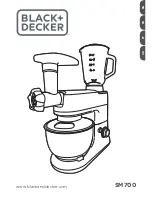
C
H A P T E R
3
O
P E R A T I N G
T H E
6 7 1 0 D
6 4
6 7 1 0 D G
R I N D E R
O
P E R A T O R
S
A F E T Y
M
A N U A L
1 0 9 4 0 1 B
3.
Conduct a machine walk-around—check its condi-
tion and ensure that it is safe to start. Look for the
following conditions:
•
Leaks
•
Frayed or damaged hoses
•
People on or near the machine
•
Non-crushable objects and tools in the feed area
•
Worn belts or other indications that delays,
downtime, or hazards may be developing
•
Bearings in need of grease. Lubricate as indi-
cated by the maintenance schedule.
•
Loose bolts, nuts, and other mechanical fasten-
ers. Retighten as needed.
•
Correct installation of all machine guards and
protective devices.
•
Maintenance air compressor is stowed against
the machine to prevent material buildup on the
assembly.
•
If you have any questions about machine safety
equipment, resolve them before operating the
machine.
4.
Make sure all Emergency Stop buttons are pulled
out.
5.
If necessary, release the chains used for travel that
secure the scrap metal chute on the discharge con-
veyor.
6.
Check the fuel level at the gauge on the fuel tank
(Figure 61).
7.
Locate the engine oil dipstick (Figure 62) and check
the oil level (Figure 63).
Figure 61:
Fuel Level Sight Gauge
F11238
Summary of Contents for Peterson 6710D
Page 6: ...C O N T E N T S 4 67 1 0 D G R I N D E R O P E R A T O R SA F E T Y M A N U A L 109401B ...
Page 158: ...16 2 67 1 0 D G R I N D E R O P E R A T O R SA F E T Y M A N U A L 109401B ...
Page 166: ...I N D E X 17 0 67 1 0 D G R I N D E R O P E R A T O R SA F E T Y M A N U A L 109401B ...
Page 167: ......
















































